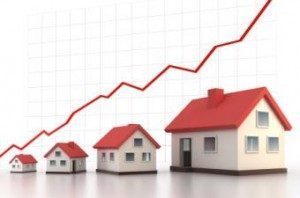 Housing prices nationally rose again in February. The S&P CoreLogic Case-Shiller U.S. National Home Price NSA Index [1], released Tuesday, found that prices climbed compared to both January and last February.
Housing prices nationally rose again in February. The S&P CoreLogic Case-Shiller U.S. National Home Price NSA Index [1], released Tuesday, found that prices climbed compared to both January and last February.
According to the index, all nine U.S. census divisions reported a 5.8 percent annual gain in February. That’s a 32-month high, and up from 5.6 percent in January. The overall national index was 185.56.
The index’s 10-city composite posted a 5.2 percent annual increase, up from a flat 5 percent the previous month, while its 20-city composite reported a year-over-year gain of 5.9 percent, up from 5.7 percent in January. The index for the 10-city composite closed February at 207.25; the 20-city composite at 193.49.
Month-over-month, the 10-city composite in February climbed 0.3 percent and the 20-city composite 0.4 percent. Adjusted seasonally, those numbers were 0.6 and 0.7 percent, respectively.
Seattle, Portland, and Dallas reported the highest year-over-year gains among the 20 cities. In February, Seattle reported a 12.2 percent year-over-year price increase; Portland an increase of 9.7 percent; and Dallas with 8.8 percent increase. New York showed the lowest increase on the list, gaining 3.2 percent since last year. Los Angeles had the highest overall index number in February: 255.19; Detroit had the lowest, with 109.6.
Fifteen cities reported greater price increases year-over-year in February than January. 2017. The below charts compare year-over-year returns for Seattle and Portland with different ranges of housing prices (tiers). Tier level analysis from 2011 to present shows both Seattle and Portland’s year-over-year housing price returns in the high tier are the most stable, while housing prices in the low tier are the most volatile.
“Housing and home prices continue to advance,” says David Blitzer, managing director and chairman of the Index Committee at S&P Dow Jones Indices. “Other housing indicators are also advancing, but not accelerating the way prices are.”
This isn’t necessarily good news to Blitzer, who said that the current, sustained period of housing price growth since coming out of the recession is atypical.
“Most housing rebounds following a recession only last for a year or so,” he said. “The notable exception was the boom that set the stage for the bubble. Housing starts bottomed in 1991, drove through the 2000-2001 recession, and peaked in 2005 after a 14-year run.”
Beating a common drum among housing experts these days, Blitzer pointed to tight inventory as one reason for escalating prices.
“There are still relatively few existing homes listed for sale and the small 3.8 month supply is supporting the recent price increases,” he said. “Housing affordability has declined since 2012 as the pressure of higher prices has been a larger factor than stable to lower mortgage rates.”
